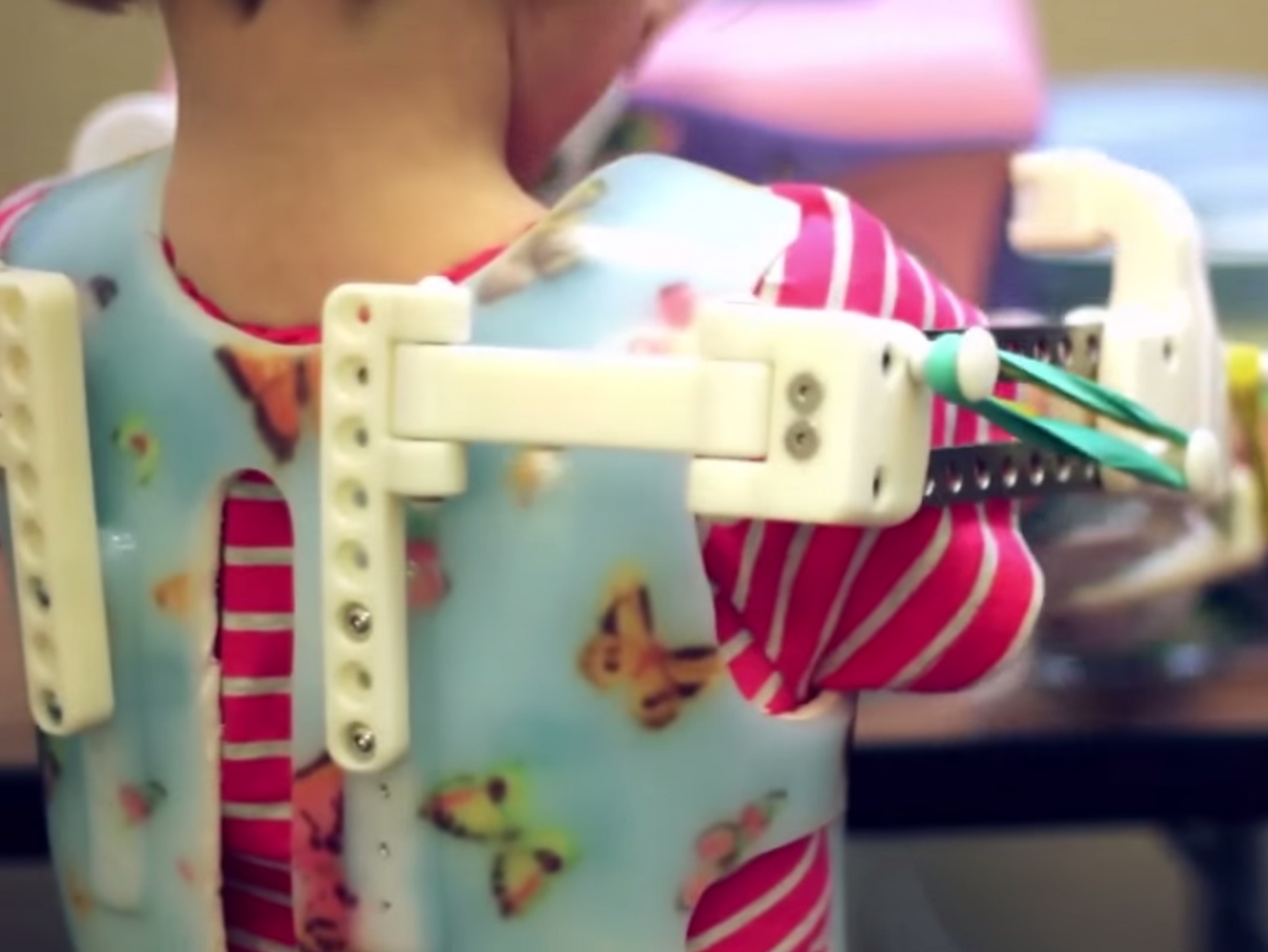
A company has developed a solution for children with chronically weak arms and shoulders using 3D printed components.
Specifically designed for those with neuromuscular disorders, debilitating weakness, Magic Arms has developed a 3D printed solution. They explain:
Magic Arms is a gravity-balancing, exoskeletal device that’s been proven to work on over 100 kids so far. Our goal is to make this technology available to every child who needs it.
They’re able to potentially help any child with these afflictions:
- Arthrogryposis multiplex congenita
- Spinal muscular atrophy
- Muscular dystrophy
- Amyotrophic lateral sclerosis
- Multiple sclerosis
- Parkinson’s disease
- Cerebral palsy
- Duchenne muscular dystrophy
- Stroke
- Partial paralysis
Solutions for children were previously tricky, as the traditional metal-based mechanisms were too heavy and expensive for widespread use. The team at Magic Arms developed a device called the “WREX” (Wilmington Robotic Exoskeleton”) that was 3D printed in light plastic, suitable for use by small children.
One of the first users, Emma, called the WREX her “Magic Arms” and the name stuck.
Like other wearable 3D printed solutions for children, the arms can be re-printed as the child quickly grows and changes size.
It’s not clear at what level the Magic Arms are priced, but there are currently over 150 people on the wait list and over 100 have been provided with the new arms.
This is a perfect example of where 3D printing technology fits well: it’s a highly personalized application where only one unique item is produced. What other functions have similar characteristics?
Via Magic Arms


